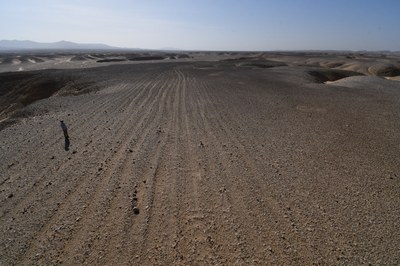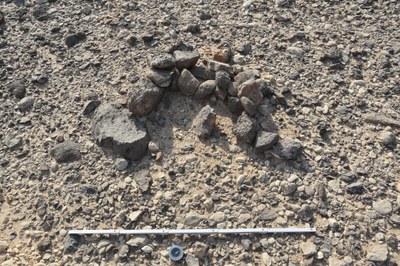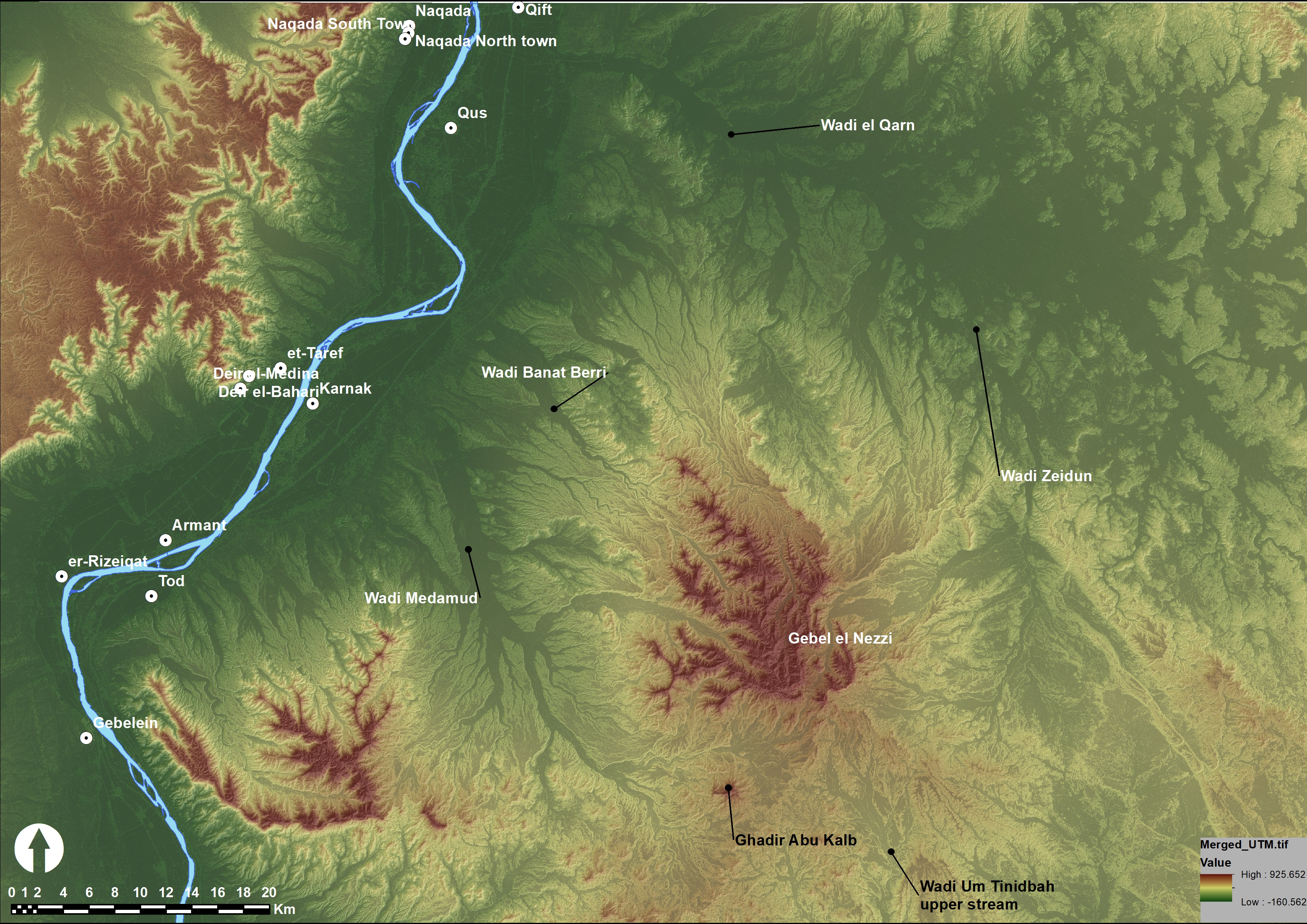Mobilität zwischen Niltal und Ostwüste/ Mobility between Nile Valley and Eastern Desert
(since 2023, PI: Dr. Rebecca Döhl, funding 2023: Gerda Henkel Stiftung)

Introduction:
This project investigates mobility as one key factor of living and sustaining groups in the Eastern Desert of Egypt. The main actors do comprise Nile dwelling groups temporarily crossing this area and mainly nomads and other mobile groups using this area for a living.
This project is intended as a mixture of computer-based analysis for recognizing and modelling movement patterns (remote sensing, LCP, ABM) and field work for collecting archaeological data of movements.
As a first show case of this approach the area of Wadi Medamud and surroundings was chosen. This was possible through a joint-venture with the project CTEDH and a funding of the Gerda-Henkel-Stiftung.
Project description:
While the area of the Eastern Desert east of Koptos and Edfu has been repeatedly visited and examined in the last centuries the area of Gebel el Nezzi directly adjacent to the Nile valley is not part of these surveys. Instead, archaeological investigations took place either in the areas close to the Nile, e.g. in Medamud or Khozam. Or the areas east of the Gebel el-Nezzi up to the Red Sea Mountains and further to the coast were examined. This seems to be due to the fact that these routes are well-known and easy accessible transport routes to the eastern desert and further to the Red Sea, that have been used extensively since the dynastic period at the latest. However, it can also be assumed that there were not only the large, infrastructurally developed routes, but also smaller, less formal connections between the Nile Valley and the various destinations in the adjacent desert (mines, pastures, etc.).
Some of these paths may also have led over the Gebel el-Nezzi. In fact, it can be assumed that there is a shortcut between the areas near the Nile at Medamud and the areas to the south located in the east-west direction of the Batur and Miya wadis. Bir Umm Tinidbah in particular could have formed a stop along the way. This can be easily reached via Wadi Medamud and Wadi Umm Tinidbah. From this well there are further connections south to Wadi Barramiya, west to the Nile Valley in the Edfu area and east to the mining areas and potential hunting or grazing grounds off the Red Sea Mountains.
1. Campaign September 2023:

In a joint venture the CTEDH project and “Mobility between Nile Valley and Eastern Desert” started with a small team its first field campaign in September 2023. Preliminary to this campaign remote sensing analysis have been done on the available satellite images and digital elevation models of the study area. The material used was mainly Google Earth imagery and ESRI satellite images, Landsat Imagery, STRM 1ARC, Nasa ASTRA V3 and recently TandemX 12m digital elevation models. The target was to identify
potential archaeological sites in the area of research. Similarly, one of the aims was to identify possible ancient routes in this area via Least-Cost-Paths and Agent-Based-Modelling.

Following this initial work the team started surveying the complicated and big watershed of Wadi el Medamud, along with Wadi Hininat, the northern part of Wadi Tinidbah, Gebel Ghadir Abu Kalb, and the northern watershed of Wadi Umm Khyam. The team chose these wadis to cover the southern watershed of Gebel el Nezzi, and mainly to try to understand the movement activity in this area. The survey results revealed the existence of at least 5 unknown ancient routes and 16 new ancient archaeological sites.
Team members
Dr. Mohamed Osman Abdollah (director of CTEDH)
Dr. Rebecca Döhl (director of “Mobility between Nile Valley and Eastern Desert”)
Mr. El Sayed Shoura (PhD candidate in Cairo University)
Mr. Ahmed el Teery (Driver)


Publications and talks:
https://vdaeg.org/newsletter/ - Newsletter #4
Talk at Workshop 2024 "Rock art research: new digital recording methods and recently developed theoretical approaches": Spatial movement and rock art – next try.
Talk at the LAC 2024: Modelling Movement in the Desert – An Egyptian case study.
